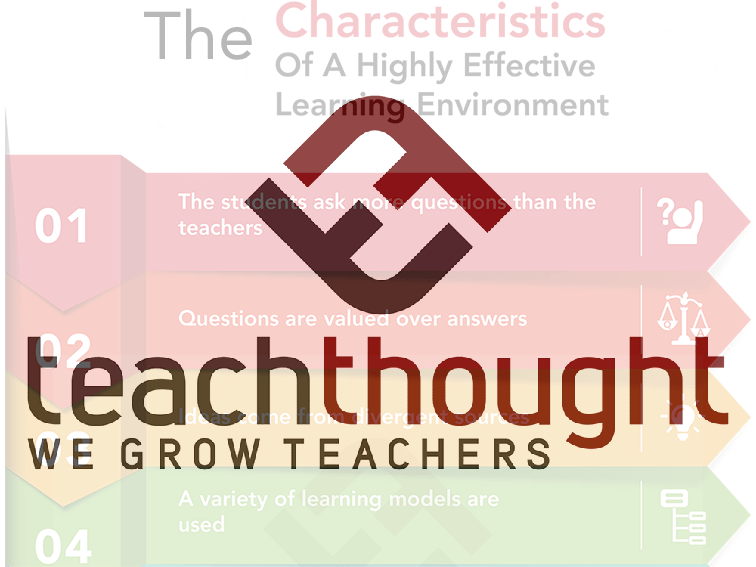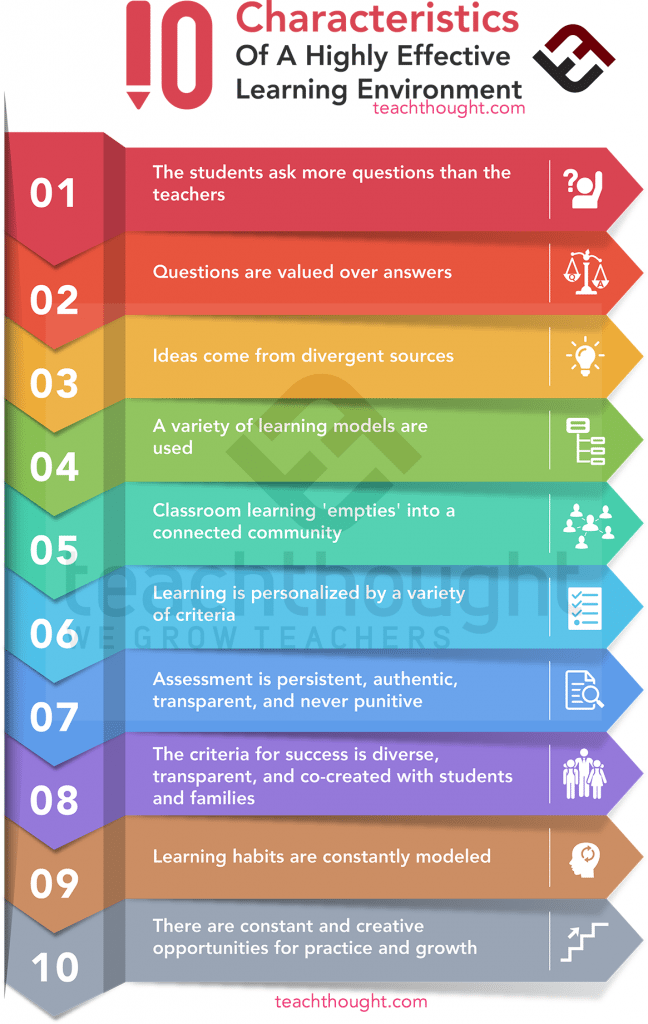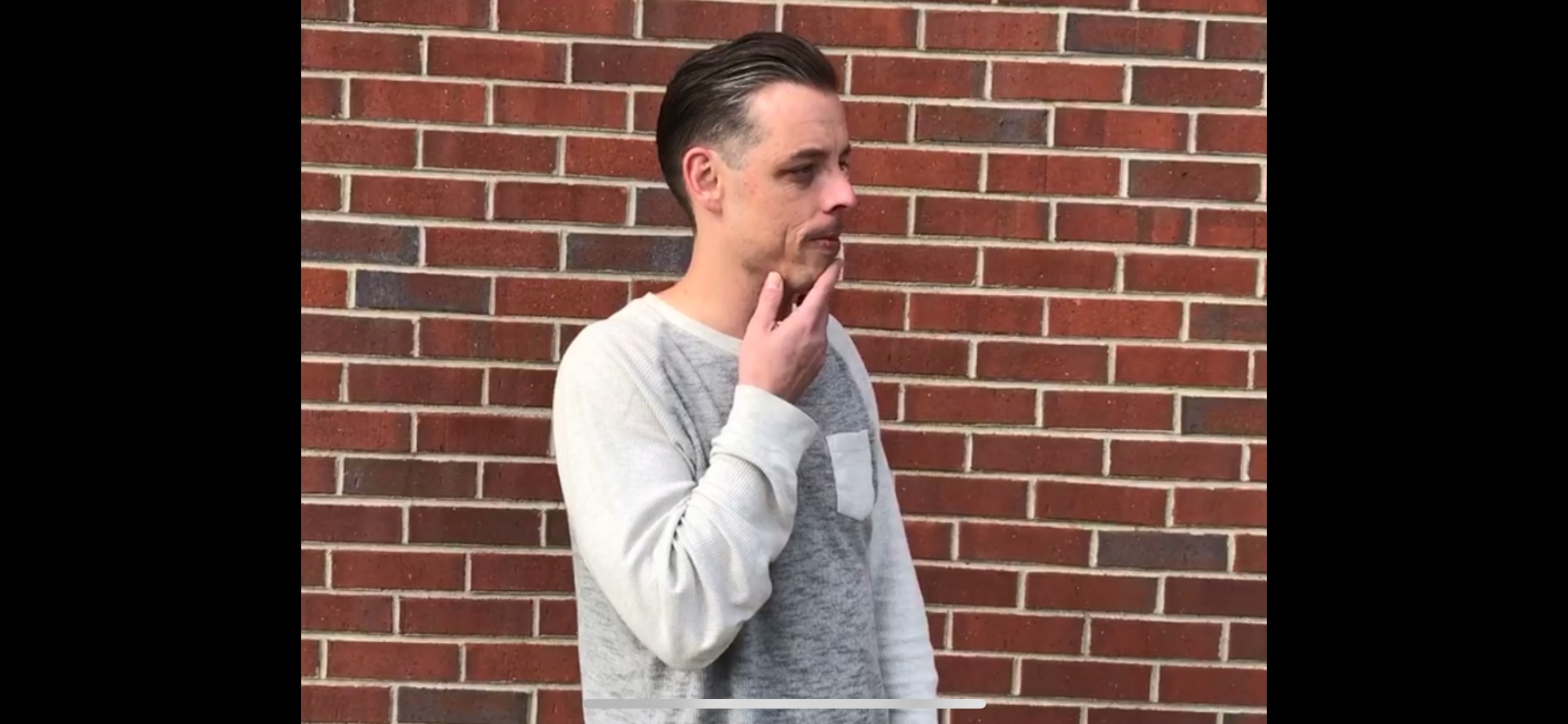
What Are The Characteristics Of A Highly Effective Learning Environment?
by Terry Heick
Wherever we are, we’d all like to think our classrooms are ‘intellectually active’ places. Progressive learning (like our 21st Century Model, for example) environments. Highly effective and conducive to student-centered learning.
But what does that mean?
See also Examples of Learning Technology
The reality is, there is no single answer because teaching and learning are awkward to consider as single events or individual ‘things.’ This is all a bunch of rhetoric until we put on our white coats and study it under a microscope, at which point abstractions like curiosity, authenticity, self-knowledge, and affection will be hard to pin down.
So we put together one take on the characteristics of a highly effective classroom. They can act as a kind of criteria to measure your own against–see if you notice a pattern.

10 Characteristics Of A Highly Effective Learning Environment [Updated]
1. The students ask the questions—good questions
This is not a feel-good implication, but really crucial for the whole learning process to work.
The role of curiosity has been studied (and perhaps under-studied and under-appreciated), but suffice to say that if a learner enters any learning activity with little to no natural curiosity, prospects for meaningful interaction with texts, media, and specific tasks are bleak. (Interested in how to kill learner curiosity in 12 easy steps?)
See also 100+loom’s Taxonomy Verbs For Critical Thinking & Learning Design
Many teachers force students to ask questions at the outset of units or lessons, often to no avail. Cliché questions that reflect little understanding of the content can discourage teachers from ‘allowing’ them. But the fact remains—if students can’t ask great questions—even as young as elementary school—something, somewhere is unplugged.
2. Questions are valued over answers
Questions are more important than answers. So it makes sense that if good questions should lead the learning, there would be value placed on these questions. And that means adding currency whenever possible—grades (questions as assessment!), credit (give them points—they love points), creative curation (writing as a kind of graffiti on large post-it pages on the classroom walls), or simply praise and honest respect. See if you don’t notice a change.
3. Ideas come from divergent sources
Ideas for lessons, reading, tests, and projects—the fiber of formal learning—should come from a variety of sources. If they all come from narrow slivers of resources, you’re at risk of being pulled way off in one direction (that may or may not be good). An alternative? Consider sources like professional and cultural mentors, the community, content experts outside of education, and even the students themselves. Huge shift in credibility.
And when these sources disagree with one another, use that as an endlessly ‘teachable moment,’ because that’s what the real world is like.
4. A variety of learning models are used
Inquiry-based learning, project-based learning, direct instruction, peer-to-peer learning, school-to-school, eLearning, Mobile learning, the flipped classroom, and on and on—the possibilities are endless. Chances are, none are incredible enough to suit every bit of content, curriculum, and learner diversity in your classroom. A characteristic of a highly effective classroom, then, is diversity here, which also has the side-effect of improving your long-term capacity as an educator.
5. Classroom learning ’empties’ into a connected community
In a highly effective learning environment, learning doesn’t need to be radically repackaged to make sense in the ‘real world,’ but starts and ends there.
As great as it sounds for learners to reflect on Shakespeare to better understand their Uncle Eddie—and they might—depending on that kind of radical transfer to happen entirely in the minds of the learners by design may not be the best idea. Plan on this kind of transfer from the beginning.
It has to leave the classroom because they do.
6. Learning is personalized by a variety of criteria
Personalized learning is likely the future, but for now, the onus for routing students is almost entirely on the shoulders of the classroom teacher. This makes personalization—and even consistent differentiation—a challenge. One response is to personalize learning—to whatever extent you plan for—by a variety of criteria—not just assessment results or reading level, but interest, readiness-for-content, and others as well.
Then, as you adjust pace, entry points, and rigor accordingly, you’ll have a better chance of having uncovered what the learners truly ‘need.’
7. Assessment is persistent, authentic, transparent, and never punitive
Assessment is just an (often ham-fisted) attempt to get at what a learner understands. The more infrequent, clinical, murky, or threatening it is, the more you’re going to separate the ‘good students’ from the ‘good thinkers.’ And the ‘clinical’ idea has less to do with the format of the test, and more to do with the tone and emotion of the classroom in general. Why are students being tested? What’s in it for them, and their future opportunities to improve?
And feedback is quick even when the ‘grading’ may not be.
8. Criteria for success is balanced and transparent.
Students should not have to guess what ‘success’ in a highly effective classroom looks like. It should also not be entirely weighted on ‘participation,’ assessment results, attitude, or other individual factors, but rather meaningfully melted into a cohesive framework that makes sense—not to you, your colleagues, or the expert book on your shelf, but the students themselves.
9. Learning habits are constantly modeled
Cognitive, meta-cognitive, and behavioral ‘good stuff’ is constantly modeled. Curiosity, persistence, flexibility, priority, creativity, collaboration, revision, and even the classic Habits of Mind are all great places to start. So often what students learn from those around them is less directly didactic, and more indirect and observational.
Monkey see, monkey do.
10. There are constant opportunities for practice
Old thinking is revisited. Old errors are reflected on. Complex ideas are re-approached from new angles. Divergent concepts are contrasted. Bloom’s taxonomy is constantly traveled up and down, from the simple to the complex in an effort to maximize a student’s opportunities to learn—and demonstrate understanding—of content.
10 Characteristics Of A Highly Effective Learning Environment
